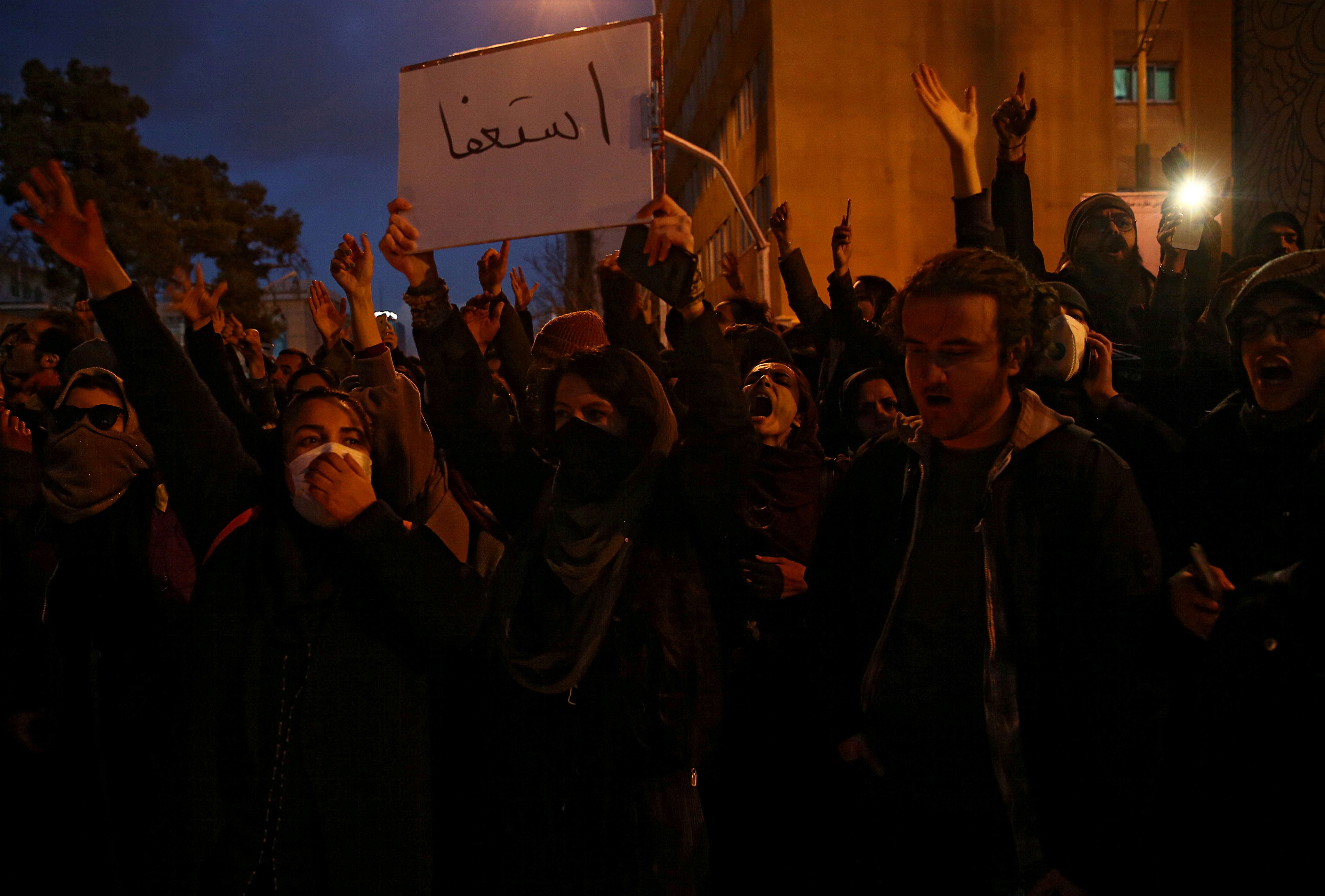January 13, 2020
No one knows what Iranians really think of their government. Outsiders aren't allowed to ask them, and they're not allowed to say. But Iran's supreme leader, its security forces, and all who support them have a common problem: No Iranian under the age of 45 is old enough to remember the 1979 Islamic Revolution that gives them their mandate to rule.
That reality has come into focus again in recent days. On January 3, US forces assassinated Qassim Suleimani, a popular and powerful Iranian general. The killing was a response to an attack by Iran-backed militias in Iraq that killed an American contractor, and to attacks on the US embassy in Baghdad on December 29 and December 31.
On the night that Iran fired missiles at Americans inside Iraq in retaliation for the killing of Suleimani, Iran's air defenses mistakenly shot down a Boeing 737 passenger plane near Tehran's main airport. This error killed 176 people, 82 of them Iranians.
When the US and Canadian governments reported evidence of this mistake, Iranian officials accused them of lying. When they then admitted three days later that Iran's military had "accidentally" shot down the plane, large protests erupted in Tehran and other Iranian cities.
The demonstrators demanded accountability from their government, despite the presence of large numbers of fully armed riot police, security forces patrolling the streets on motorcycles, and an awareness that plainclothes police were moving among the crowd.
They also knew that Iran's security forces are willing to kill protesters. Just two months ago, security forces responded to demonstrations against a government hike in fuel prices by killing some 1,500 people. There is some evidence that police have fired live ammunition at protesters again this week.
Iran's government has also tried to stifle dissent by controlling the flow of information its citizens receive. State media reported that missiles fired following Suleimani's death had killed 80 Americans. In reality, there's no evidence of a single US casualty.
But state officials know the public is less likely to believe these claims when they're forced to admit the US and Canada were right that Iran had shot down that passenger plane. That's why Iranian officials reportedly shut down segments of Iran's internet last week— and why these shutdowns may become more common.
There's no sign that Iran is on the verge of a new revolution. Yes, US sanctions are again strangling Iran's economy with no sign of relief in sight. But protests in Iran are common, and security forces can probably keep them in check for the foreseeable future. The millions of Iranians who turned out across the country to mourn Suleimani also remind us that national pride and fear that the nation is under attack can temporarily bolster unity in Iran, just as in other countries.
Yet, all Iran's protests—whether targeted at corruption, a spiralling economy, suppression of personal freedoms, or at an unaccountable government that spends too much on foreign interventions and not enough at home—may begin to matter, particularly as it becomes harder to ask the public to endure hardships in the name of a revolution that fewer and fewer citizens are old enough to remember.
More For You
Most Popular
Fishing boats moored at Taganga Beach, as fishermen express concern over unclear US government videos showing strikes on vessels during anti-narcotics operations, amid fears that those targeted may have been fishermen rather than drug traffickers, in Santa Marta, Colombia, on October 20, 2025.
REUTERS/Tomas Diaz
Walmart’s $350 billion commitment to American manufacturing means two-thirds of the products we buy come straight from our backyard to yours. From New Jersey hot sauce to grills made in Tennessee, Walmart is stocking the shelves with products rooted in local communities. The impact? Over 750,000 American jobs - putting more people to work and keeping communities strong. Learn more here.
© 2025 GZERO Media. All Rights Reserved | A Eurasia Group media company.
